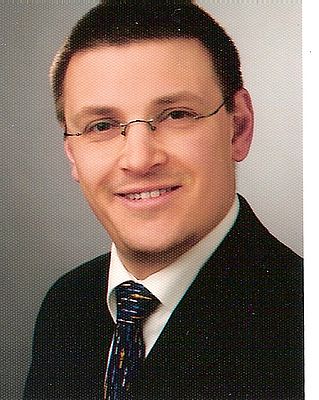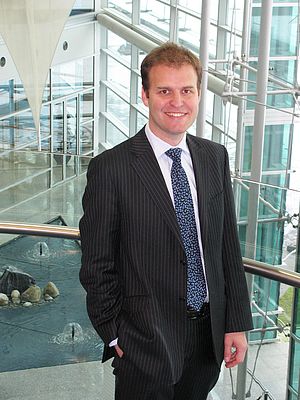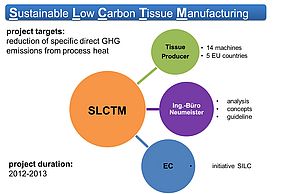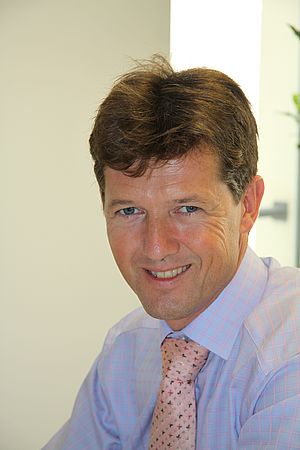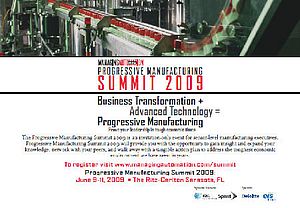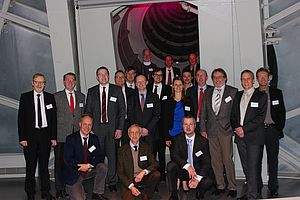As a result of their joint research the authors report on the use of monitoring systems for power consumption in production companies. The energy data collected is of great importance as a leadership tool in daily shop floor management as well as in the procurement process of new equipment.
Energy as a competitive advantage
The energy costs in manufacturing industries are increasingly becoming a key competitive factor. Major innovations in products or process engineering are not the only response to the challenges of cost improvements. In practice diverse technical approaches to saving electricity, gas and other fuels have already become well-established. However, the barrier for companies seems to be their suboptimal implementation system.
Recently the ISO 50001 on “Energy Management” was published, which is incorporating the EN 160001:2009 ideas. Consequently, certifications based on the ISO standards will replace those based on the EN standard. Energy management systems (EMS) make sure that energy flows are being identified, quantified and taken as a basis for decision-making in companies. As a result, over a period of few years cost cutting effects of minimum10 % due to the EMS may be expected. This might motivate investment in technologies for measurement and control of energy consumption, which is typically not a core business element.
Both authors, representing the University of Applied Sciences in Pforzheim, had the opportunity to gain a broader understanding of the keys to success of efficient energy management. This research was carried out in cooperation with Daimler and a number of SMEs.
Data acquisition as a cornerstone of success
During the analysis of the project it was particularly noticeable that the greatest savings often came from the field of systematic demand adaption. Whether this was due to the lighting control in the production hall using a light sensor or an intelligent exhaust control in the machining center, the key issue was always that sustainable improvements are not possible without the measurement of the relevant parameters.
For this reason is energy data acquisition a key factor in the plan-do-check-act cycle of the proposed changes. Econ-solutions offers a modularly designed data acquisition and evaluation system that was used as an analysis instrument within a series of projects. The relevant consumption data on sensors for electricity, gas, water or other physically measurable parameters have been collected, saved and processed for subsequent analysis. Systems of this kind allow flexible classification of their individual sensor data. These can then be easily adapted to the different levels of aggregation in constantly changing business structures and product life cycles.
Correlations of various influencing factors may be determined during the analysis and optimization phase and the desired measures can be defined through the graphical illustration of multiple parameters. This is a relevant instrument in the allocation of energy consumption in terms of the responsible cost center and systematic management of the consumption improvement. Furthermore, consumption data or specific parameters such as the body noise emitted by a system or even the monitoring of abrasion behavior can also be used. In these cases corresponding threshold monitoring allows a prevention mechanism within the framework of condition monitoring.
Involvement of the staff
Efficiency improvements in the energy sector like the change processes of Lean Management are based on the diversity of ideas and the involvement of the staff. Consumption data are therefore an integral part of operational shop floor management in terms of the continuous improvement process. Today’s successful production management is no longer able to deal without control loops, whose content outlines the collection and regular review of important operational metrics such as productivity, non-conforming material or delivery performance.
The use of charts focusing on the energy data consumption plays a vital role on the lower observation level of the balanced scorecard. The machine operator is provided with the current consumption data in the daily feedback meeting, recognizes the relevant key parameters and thus becomes empowered to participate in the improvement process.
The full impact of the continuous improvement approach involves brainstorming and disciplined adherence to the standards previously defined. It is essential to understand that great cost improvements with short amortization times are especially to be found in the non-investment areas of the implementation. In many cases proposals result from meetings on the shop floor level. They often lead to product or process innovations which are subsequently adopted as standard specifications for new equipment.
How to use waste heat
Distributed heat sources and heat sinks frequently lie close together throughout the factory. Cost reduction potentials can be attained through extensive crosslinking of energy flows. As a general rule waste heat of a higher temperature level has fewer restrictions for further utilization. For this reason waste heat should be transferred directly at its point of origin to the transfer medium. If the waste heat has already been transferred into the workshop air, any commercial utilization is almost impossible.
Water-cooled compressors or electrical drives are ideal examples for this purpose as their waste heat can be used to run part cleaning systems or support seasonal building heating systems. The use of primary energy to heat buildings on workdays can be completely eliminated within many production facilities. The time delay between the waste process heat and need for heating, as typically occurs at the weekend, can be retained for example through buffering over latent heat storage systems.
Recommended course of action
There is a great opportunity available to use the innovation potential of the machine and engineering department to find energy efficient solutions and standardize it in the investment procedure for new equipment. However, most of the machine suppliers only focus on the connection values of the machines. Detailed fact sheets on product specific power consumption are seldom discussed and the equipment purchaser often has no reliable analyses of the comparative data from the history. In this case energy data acquisition enables an objective evaluation and provides detailed parameters in the standard specification of new machines in respect of the life cycle costs.
The acquisition costs are not the main consideration but a holistic view of the investment including the energy costs, maintenance costs and the final recycling of the production equipment are taken into account. Sound guidelines within an enquiry process allow specific planning and a broad understanding of the agreed specifications. This closed control loop, which ranges from the analysis and optimization of the existing range of investments through to the focus on the new procurement, has an impact on cost reduction and provides an active contribution to environmental protection.
About the authors
Dr. Peter Saile is Professor for Production and Logistics at the University of Applied Sciences in Pforzheim. His research focus is in the field of lean manufacturing and energy efficient production. In addition to this academic background, Mr. Saile gained a wide range of experience in the automobile industry.
Dr. Jörg Woidasky is Professor for Sustainable Product Development at the University of Applied Sciences in Pforzheim. His research focus since almost two decades is on environmental technologies and resource efficiency in production.




